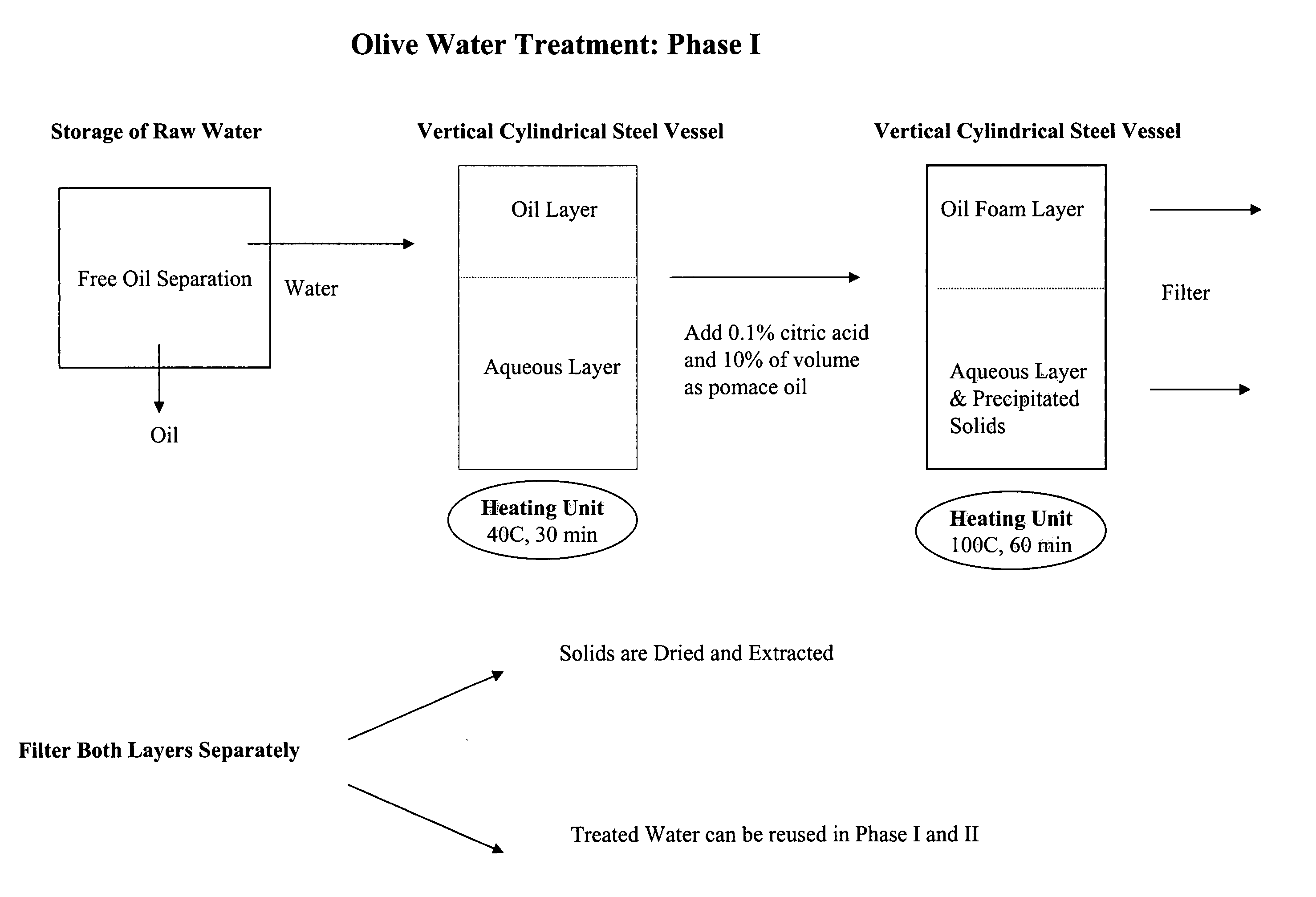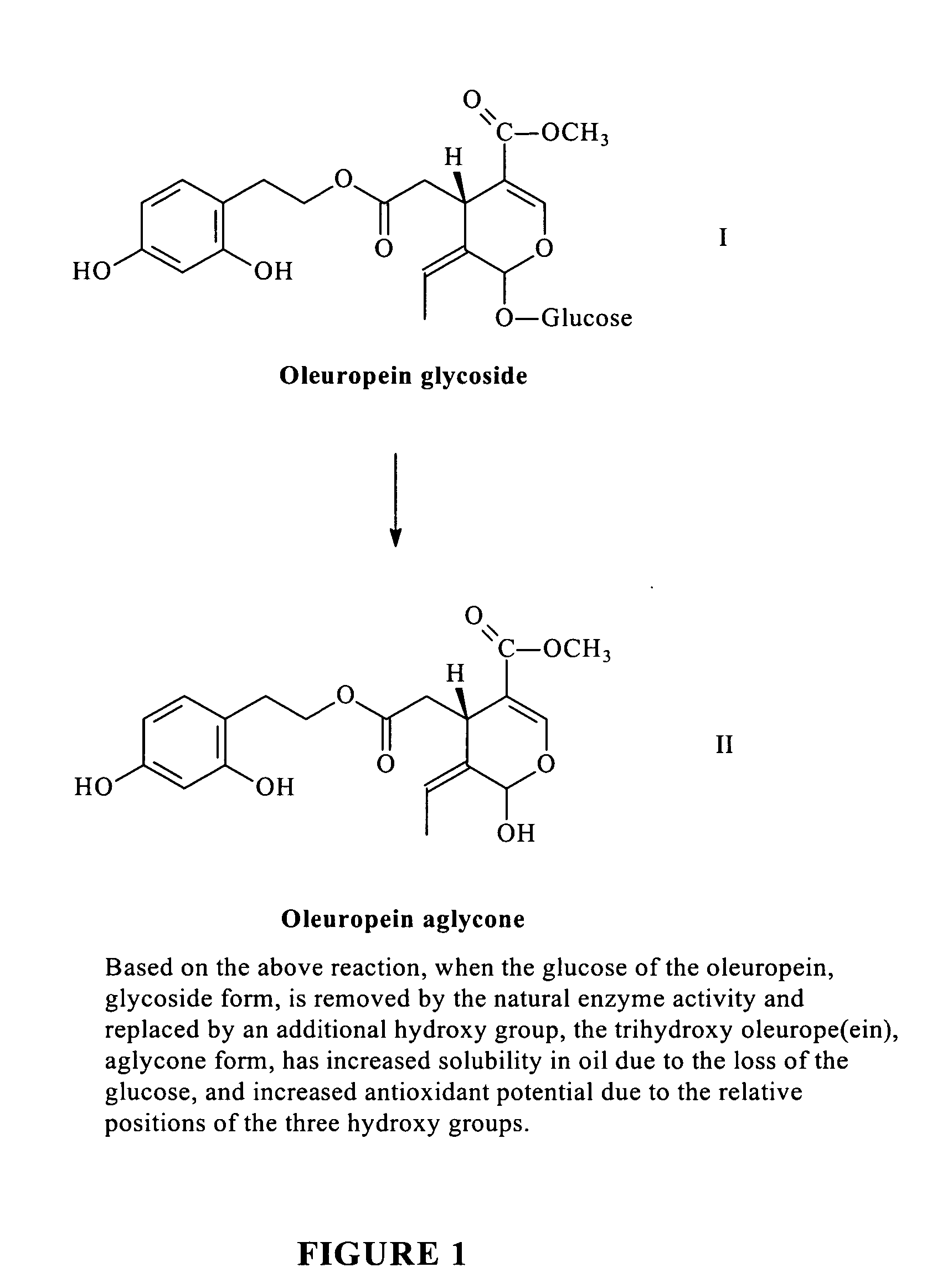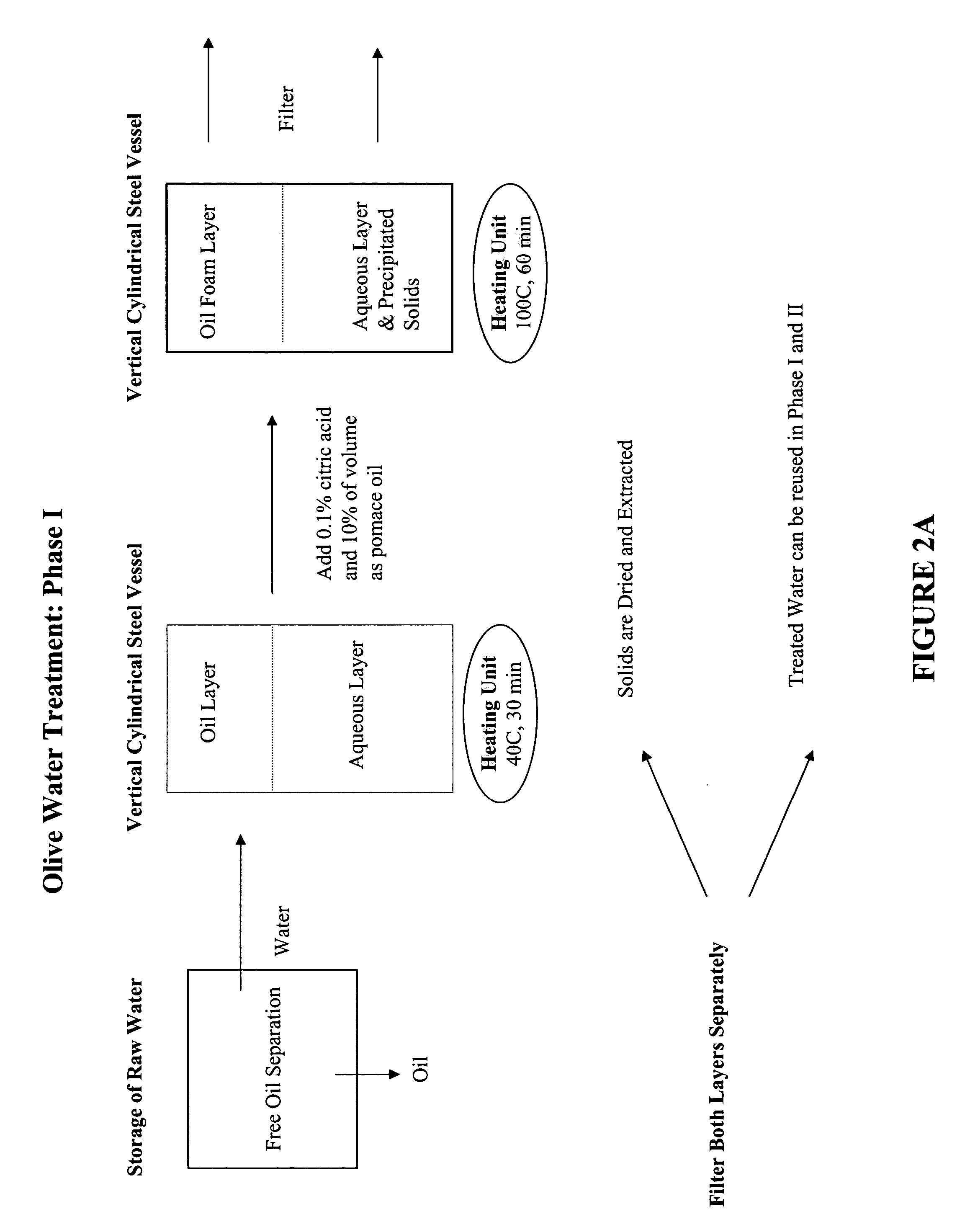Isolation of oleuropein aglycon from olive vegetation water
a technology of oleuropein aglycon and olive vegetation water, which is applied in the direction of solvent extraction, separation process, food preparation, etc., can solve the problems of substantial loss of oleuropein aglycon with waste water during processing, added cost, and substantial loss of oleuropein aglycon
- Summary
- Abstract
- Description
- Claims
- Application Information
AI Technical Summary
Problems solved by technology
Method used
Image
Examples
Embodiment Construction
[0014] The instant invention provides methods for selectively removing and recovering oleuropein aglycon from OVW. In one embodiment, the method involves the following steps: [0015] Obtaining raw OVW comprising oleuropein, oleuropein aglycon, and conversion enzymes; [0016] Adding pomace oil to the raw OVW to concentrate oleuropein aglycon in a collection of floating solids; [0017] Adding citric acid and heat to form precipitated solids; [0018] Adding treated water to raw OVW to form additional precipitated solids and to increase oleuropein aglycon concentration; [0019] Adding a solvent mixture (e.g., hexane and acetone) to extract the oleuropeins and further concentrate oleuropein aglycon; and [0020] Adding treated water during a final evaporation stage to facilitate oil separation, solvent removal, and further increase the total level of oleuropeins extracted.
The resulting OVW can be used for direct irrigation, or further treatment by conventional waste water processes.
[0021] Fo...
PUM
 Login to View More
Login to View More Abstract
Description
Claims
Application Information
 Login to View More
Login to View More - R&D
- Intellectual Property
- Life Sciences
- Materials
- Tech Scout
- Unparalleled Data Quality
- Higher Quality Content
- 60% Fewer Hallucinations
Browse by: Latest US Patents, China's latest patents, Technical Efficacy Thesaurus, Application Domain, Technology Topic, Popular Technical Reports.
© 2025 PatSnap. All rights reserved.Legal|Privacy policy|Modern Slavery Act Transparency Statement|Sitemap|About US| Contact US: help@patsnap.com



